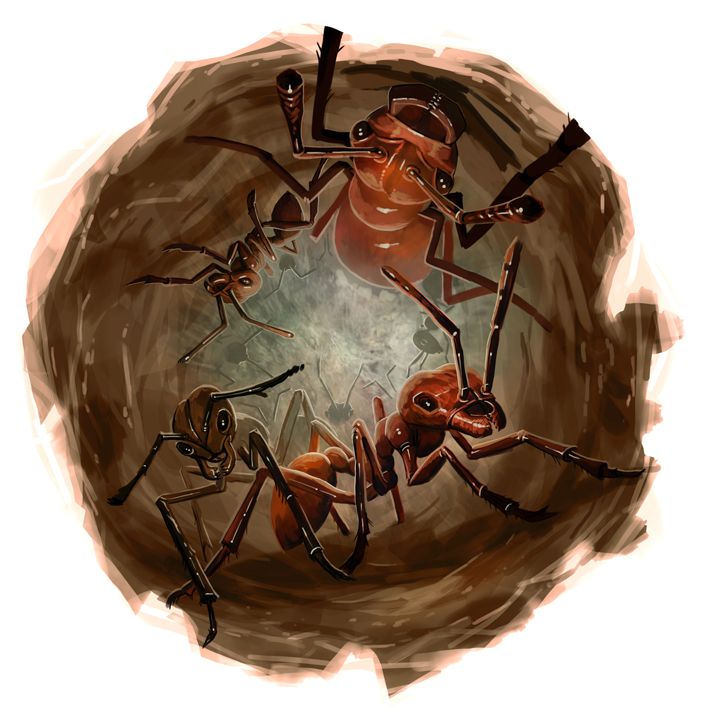Carpenter Ant (giant)
| Species | insect (camponotini gargantua) |
| No. Appearing | 7-28 & queen |
| Behaviour | nest |
| Range | taiga |
| Size | 6 ft. long |
| Weight | 480 lbs. |
| Intelligence | 0 |
| Armour Class | 3 |
| Hit Dice | 6 |
| Action Points | 5 |
| Max. Stride | {{{stride}}} |
| THAC0 | 17 |
| Hp/Die | 2d4 |
| Attack Forms | pincers |
| Damage | 2-12 |
| Special Attacks | none |
Encounters with giant carpenter ants are likely to start by encountering a forager. This individual will be located from 100 to 600 yards from the nest. Upon contact, the ant will attack, clicking and releasing a pheromone that will quickly spread outwards. This will bring 1–2 additional workers within 2–8 rounds. Following this first encounter, another like it will occur again, if the party presses towards the nest, with +1 additional worker appearing. Thereafter, all the remaining workers will be on high alert, remaining within 50 yards of the nest, for a period of 1 to 4 hours — at which time they will begin to forage again.
The queen will fight aggressively in her lair, after spending one round removing herself from her egg sack. All carpenter ants will fight to the death. Each ant is as large as a lion; the queen is bigger still. They will aggressively overbear opponents, pushing them from hex to hex.
There is a fair chance of finding treasure in a carpenter ant nest. Instead of carving up their victims before returning to their nest, carpenter ants will collect the whole body of humanoids they find.
| Species | insect (camponotini gargantua) |
| No. Appearing | 1 |
| Behaviour | nest |
| Range | taiga |
| Size | 8 ft. 6 in. long |
| Weight | 1,300 lbs. |
| Intelligence | 0 |
| Armour Class | 4 |
| Hit Dice | 12 |
| Action Points | 2 |
| Max. Stride | {{{stride}}} |
| THAC0 | 14 |
| Hp/Die | d12 |
| Attack Forms | pincers |
| Damage | 3–18 |
| Special Attacks | none |
These carcasses, once destroyed, will leave behind metal goods such as armour, weapons and coins — though soft goods such as clothes, leather and wood will be destroyed by enzymes or the damp.
In northern climates, giant carpenter ants will be active only between the months of April and early October. The queen will live for up to ten seasons; but she will birth 2-3 queens and 5-8 male drones (who are harmless). These will emerge in the third week of September, mating in the air hundreds of feet above the nest. The males will die and the queens will start new nests within one to two miles of their origin.
See Bestiary
